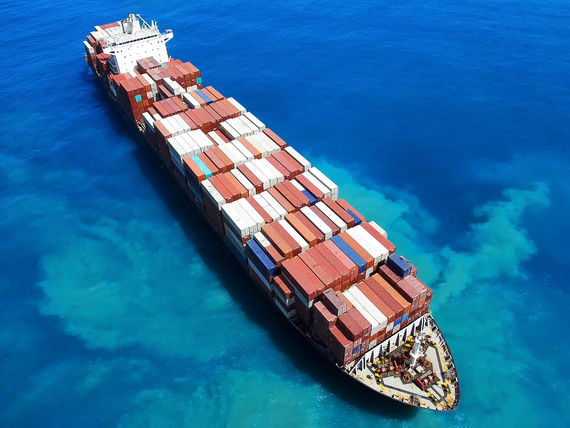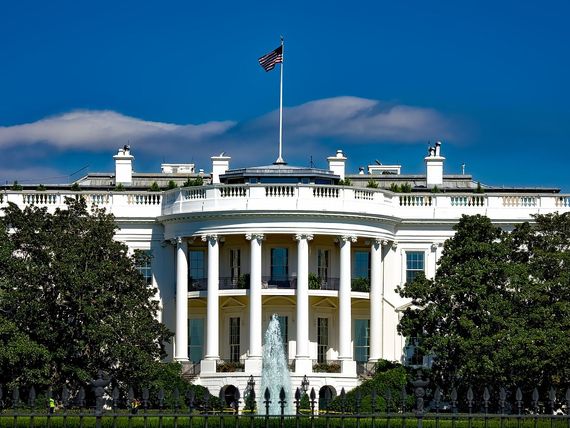Trendwatch: China’s import surprise offers hope as recovery risks linger; ILA leadership warns US East Coast dockworkers to prepare for 2024 strike; Feds award $653M for 41 port projects

China’s import surprise offers hope as recovery risks linger
China’s trade data for October offered a mixed picture for the economy’s outlook, as an unexpected pickup in imports was offset by signs that global demand for Chinese goods is struggling to gain traction.
Imports rose 3% from a year earlier last month, the first gain in eight months and bucking the consensus forecast for a drop. Overseas shipments dropped 6.4%, worse than expectations. The resulting trade surplus was $56.5 billion.
The data underlines the fragility of the recovery in the final three months of 2023. Import growth suggests domestic demand may be recovering, but the decline in exports was a big disappointment for a period that should have been more favorable: This October compared to a month in 2022 when the pandemic and controls to contain it disrupted logistics and production.
ILA leadership warns US East Coast dockworkers to prepare for 2024 strike
The leadership of the U.S.’s International Longshoremen’s Association, the union representing dockworkers along the East Coast as well as far west as Houston and the Great Lakes, is working to harden its membership for a potential strike in October 2024. While the master contract for some 45,000 of the ILA’s 70,000 members has 10 months left, union leaders began more than a year in advance to talk about the potential of a job action.
During an educational conference this week for members in the South Atlantic region and the Gulf Coast, ILA leadership plans to say “Members should prepare for the possibility of a coast-wide strike in October 2024,” according to a statement issued by the ILA over the weekend. They are reporting that ILA President Harold Daggett will pledge to hold firm while speaking to the ILA officers and members at the conference.
Feds award $653M for 41 port projects
The nation’s more than 300 coastal and inland ports get a B- grade from the American Society of Civil Engineers, meaning they’re adequate for now but require attention. While port funding has risen in recent years, there is still a gap of over $12 billion for waterside infrastructure such as dredging over the next decade, and billions more are needed for landside port infrastructure, according to ASCE.
The IIJA’s $17 billion total in investments are the country’s largest-ever dedicated funding for ports and waterways, according to the DOT, and are key to strengthening supply chain reliability.
Panama Canal restrictions to stretch into 2024 as low water levels persist
The Panama Canal announced another set of restrictions to reduce transit capacity as a result of continued low-water level at Gatun Lake.
Last week, booking slots were reduced to 25, down 30% from August, and will go down to 24 on Wednesday. Slots will continue to gradually decline in the new year.
The restrictions mark a significant escalation from earlier this summer, where June averaged 33 vessel arrivals per day, with a high of 49 vessels that month, according to the canal’s operations summary.
US trade deficit widens by more than forecast on goods demand
The US trade deficit widened by more than expected in September, reflecting the resilience of American demand for foreign goods.
The shortfall in goods and services trade expanded 4.9% from the prior month to $61.5 billion, Commerce Department data showed Tuesday. The median estimate in a Bloomberg survey of economists had called for a $59.8 billion gap.
The value of imports rose to the highest since February, while exports increased to a more than one-year high. The figures aren’t adjusted for inflation.
Global supply-chain pressure hits record low, NY Fed gauge shows
Global logistics difficulties are at the lowest in 26 years as transportation costs keep declining, according to a gauge maintained by the Federal Reserve Bank of New York.
The regional Fed bank’s Global Supply Chain Pressure Index fell to minus 1.74 in October, the lowest in records back to 1997, it said on its website.
Zero represents the historical average, and changes in either direction mark standard deviations from that trend. The gauge has clocked nine straight months of negative readings. The cost of moving goods by rail, truck, sea and air has declined from record highs set during the pandemic.
Malaysia reviews airline license terms after startup’s woes
Malaysia will review conditions for granting licenses to new airlines after financial troubles forced a low-cost startup carrier to abruptly suspend its services.
Conditions need to be more stringent and additional background checks should be done to ensure the “competency and financial strength” of companies applying for an air service license, the country’s Transport Minister Anthony Loke said in an interview Thursday, without going into further detail.
Subang, Selangor-based MYAirline suspended operations just 10 months after it started flying, prompting authorities to halt its license while also initiating a money-laundering investigation against individuals involved with the airline.
CBP reaches milestone in providing relief to American businesses injured by unfair trade
U.S. Customs and Border Protection announced today that it has processed all outstanding imports subject to the Continuing Dumping and Subsidy Offset Act of 2000, otherwise known as the Byrd Amendment.
“Under the Continuing Dumping and Subsidy Offset Act, CBP has distributed billions of dollars of support to thousands of U.S. manufacturers, small businesses, and individuals harmed by anti-competitive behavior and unfair trade practices,” said CBP Executive Assistant Commissioner AnnMarie R. Highsmith. “The funds have provided much needed relief to affected industries and have helped level the playing field for American businesses.”
Both dumping and subsidization occur when a foreign producer or exporter sells a product in the United States at a price that is below “normal value,” or is subsidized by a foreign government and injures U.S. manufacturers. The purpose of antidumping and countervailing duties assessed on dumped and subsidized imports is to provide fair competition for U.S. manufacturers.

